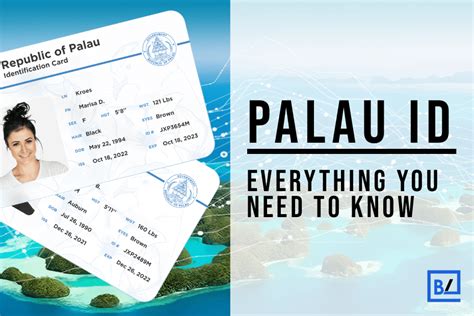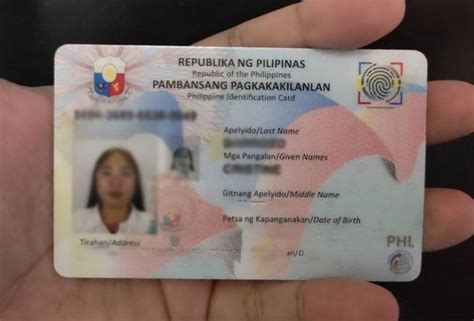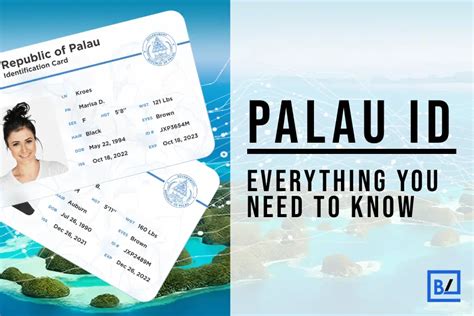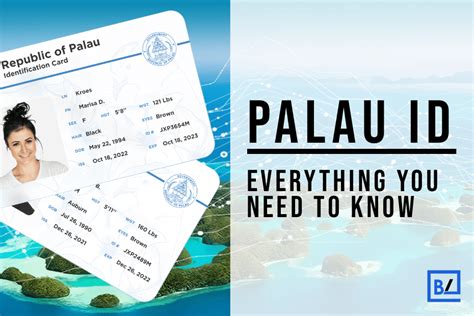National IDs are an essential part of our lives. They allow us to access a wide range of services, from healthcare to banking. As technology advances, so too will the ways in which we use our national IDs.

1. Mobile IDs
One of the most significant trends in national IDs is the move towards mobile IDs. Mobile IDs are digital versions of physical IDs that can be stored on a smartphone or other mobile device. They offer a number of advantages over physical IDs, including:
- Convenience: Mobile IDs are always available, so you don’t have to worry about forgetting or losing your physical ID.
- Security: Mobile IDs are more secure than physical IDs, as they can be protected by a password or PIN.
- Versatility: Mobile IDs can be used for a wider range of purposes than physical IDs, including making payments, accessing online services, and unlocking doors.
2. Biometric IDs
Biometric IDs are another emerging trend in national IDs. Biometric IDs use unique physical characteristics, such as fingerprints, facial features, or iris patterns, to identify individuals. They offer a number of advantages over traditional IDs, including:
- Security: Biometric IDs are more difficult to forge or counterfeit than traditional IDs.
- Convenience: Biometric IDs can be used without having to remember a password or PIN.
- Accuracy: Biometric IDs are highly accurate, even in challenging conditions.
3. Federated IDs
Federated IDs are another important trend in national IDs. Federated IDs allow individuals to use a single ID to access a variety of services, even if those services are provided by different organizations. This can make it easier for individuals to manage their digital identities and access the services they need.
4. Digital wallets
Digital wallets are becoming increasingly popular as a way to store and manage digital IDs. Digital wallets allow individuals to store multiple IDs in a single place, making it easier to access the services they need. They also offer a number of security features, such as encryption and password protection, to keep IDs safe.
Additional future trends in national IDs include:
- The use of artificial intelligence to improve the accuracy and security of national IDs.
- The use of blockchain technology to create a more secure and transparent national ID system.
- The use of immersive technologies, such as virtual reality and augmented reality, to create a more engaging and user-friendly national ID experience.
Benefits of future trends in national IDs
The future trends in national IDs offer a number of benefits for individuals and governments. For individuals, future trends in national IDs can:
- Make it easier to access services. Mobile IDs, biometric IDs, and federated IDs can all make it easier for individuals to access the services they need, such as healthcare, banking, and voting.
- Increase security. Mobile IDs, biometric IDs, and digital wallets can all help to increase the security of national IDs, making it more difficult for them to be forged or counterfeited.
- Improve privacy. Federated IDs can help to improve the privacy of national IDs by allowing individuals to control who has access to their information.
For governments, future trends in national IDs can:
- Reduce costs. Mobile IDs, biometric IDs, and federated IDs can all help to reduce the costs of issuing and managing national IDs.
- Improve efficiency. Mobile IDs, biometric IDs, and federated IDs can all help to improve the efficiency of national ID systems, making it easier for individuals to access the services they need.
- Increase security. Mobile IDs, biometric IDs, and digital wallets can all help to increase the security of national ID systems, making it more difficult for them to be hacked or compromised.
Challenges of future trends in national IDs
The future trends in national IDs also present a number of challenges for individuals and governments. For individuals, future trends in national IDs can:
- Increase the risk of identity theft. Mobile IDs, biometric IDs, and digital wallets can all increase the risk of identity theft if they are not properly secured.
- Create a digital divide. Mobile IDs, biometric IDs, and digital wallets may not be accessible to everyone, creating a digital divide between those who have access to these technologies and those who do not.
- Raise privacy concerns. Federated IDs and digital wallets may raise privacy concerns, as they allow individuals to store and manage their personal information in a digital format.
For governments, future trends in national IDs can:
- Be difficult to implement. Implementing mobile IDs, biometric IDs, and federated IDs can be a complex and time-consuming process, requiring significant investment in technology and infrastructure.
- Be expensive to maintain. Mobile IDs, biometric IDs, and federated IDs can be expensive to maintain, as they require ongoing investment in technology and security.
- Create privacy concerns. Federated IDs and digital wallets may raise privacy concerns, as they allow governments to collect and store personal information about individuals.
Conclusion
The future trends in national IDs offer a number of benefits for individuals and governments. However, they also present a number of challenges that need to be addressed. By carefully considering the benefits and challenges, individuals and governments can work together to create a national ID system that is secure, efficient, and respectful of privacy.
1. What are the benefits of using a national ID?
2. What are the challenges of using a national ID?
3. What are the future trends in national IDs?
4. How can I protect my national ID from fraud?
5. What should I do if my national ID is lost or stolen?
6. How can I update my national ID information?
7. What are the different types of national IDs?
8. What is the difference between a national ID and a passport?
- Use a strong password or PIN to protect your mobile ID.
- Enable two-factor authentication for your mobile ID.
- Be careful about what information you share with others.
- Keep your mobile ID up to date with the latest security patches.
- Report any lost or stolen mobile IDs to the issuing authority immediately.



